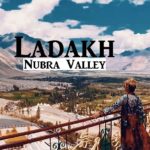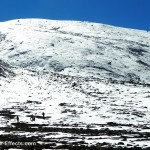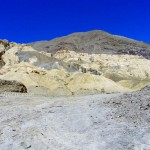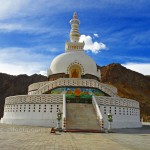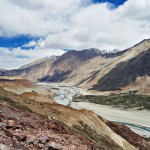With its turquoise sky, rugged terrains and snow-capped mountain peaks, Nubra valley is one of the most stunning places in Ladakh. The valley is blessed with dramatic landscapes of soaring mountains, vast stretches of sand dunes and green valley beds with vibrant flowers. Nubra Valley Travel Guide What makes this sight even more pleasing is the smooth flow of the dual rivers of … [Read more...] about Nubra Valley Travel Guide | Everything You Need To Know
North India
A Trip to Sikkim – India
Since 2011, I was planning a trip to Sikkim, but owing to the earthquake and consequent disruptions in the roadways of the state, I was obliged to postpone it to a later date. However, things did work out absolutely well this year, and on the 31st of Oct, 2012, I was on my way to visit this splendid land of myths and spectacular sceneries, greenery and waterfalls, happiness and … [Read more...] about A Trip to Sikkim – India
Lamayaru: The Moonland of Ladakh
Loacted 15 Km east of the famous Fotu La pass on the Leh-Srinagar highway, Lamayaru is popularly known as moonland by the local due to its peculiar land surface which closely resembles the surface seen on moon. The mystique of the Lamayaru monastery located here is unmatched by any other in the entire Ladakh region. The clear blue skies meet the rugged horizon of broken mud … [Read more...] about Lamayaru: The Moonland of Ladakh
Monasteries of Ladakh
The magnificent monasteries of Ladakh are most attractive of tourist attractions for people from all over India and abroad. These monasteries are peace abodes of the monks of various orders of Buddhism providing the ideal getaway for pursuit of spiritualism and study of religion. Amazingly built on steep mountain slopes the monasteries are indeed architectural marvels and … [Read more...] about Monasteries of Ladakh
Nubra Valley – Ladakh
Located 150 Km north of Lah, the Nubra Valley derives its name form Ldumra (the valley of flowers). It is the confluence of Shyok and the Nubra River creating a wide valley that separates the main land Ladakh from the Karakoram ranges. The valley is full of surprises for the casual visitor who expects snow covered peaks, the valley being at 10000 feet above the mean sea level. … [Read more...] about Nubra Valley – Ladakh
Pangong Lake – Ladakh
Literally meaning “Lake of the Great Hollow”, the Pangong lake lies 160 Km southeast of the capital town ofLehand is certainly one of the most mesmerizing sights of Ladakh. Technically speaking it is the largest endoheric lake inAsiaand lies at an altitude of 13,900 feet above the sea level. Though salty the water of this lake is crystal clear displaying a breathtaking … [Read more...] about Pangong Lake – Ladakh

